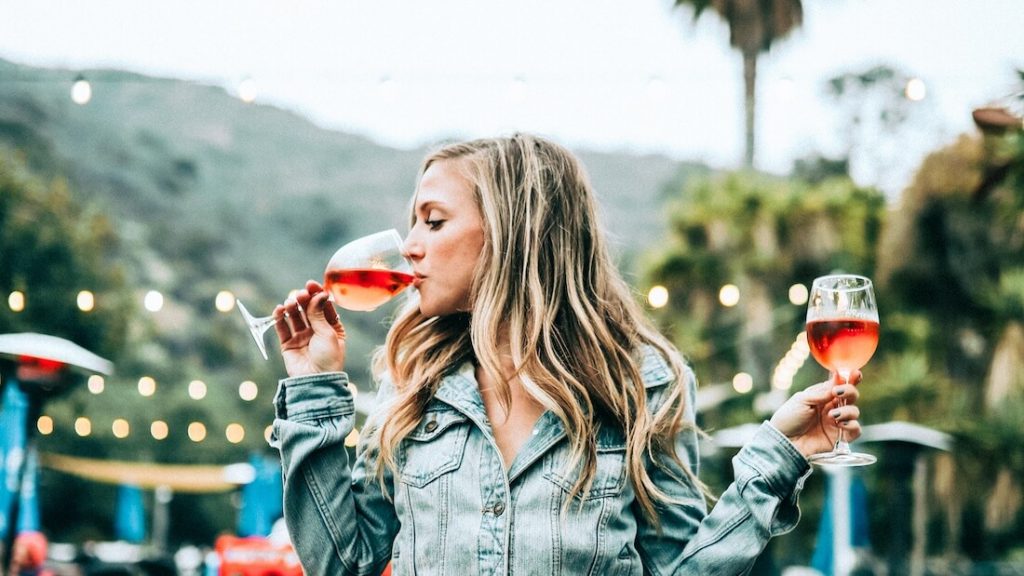In the plant-based culinary world, we work with five food groups: fruits, vegetables, whole grains, legumes, and healthy fats (nuts and seeds, avocados, olives, and others). As with animal-based dishes, more often than not, it’s the “accoutrements” and sauces we add to these foods that will make or break a successful wine pairing. And despite popular belief, pairing vegetables with wine does not have to be difficult.
Pairings work when the food makes the wine taste better, and the wine makes the food taste better. If one or the other is more dominant, it is an uneven match.
Cooking methods such as braising, roasting, sautéing, and steaming impart different flavors and sensations, as does choice of seasoning, and suggest different wine choices.
For leafy greens and salads, I am almost always in favor of dry, sparkling wines such as Cava, Crémant and Champagne, or dry, minerally rosé wines and high-acid whites like Sauvignon Blanc or Grüner Veltliner.
Vegetables like parsnip, onion, carrots, zucchini, garlic, sweet potatoes, and red peppers, will become sweeter and gain more depth of flavor when roasted. Intensely flavored, aromatic white wines with good acidities, such as New Zealand Sauvignon or a German Riesling, Verdejo, Alsace whites like Pinot Gris and Gewurztraminer, and Hungarian whites made from indigenous varieties such as Furmint or Harslevelu, are great. Fruity, less tannic reds can also work here such as Pinot Noir, Barbera, and Malbec.
Fruits that are stewed or dried require a fruitier wine or even a dessert wine like port or Marsala, while fresh fruit has a lot of acid and are a great match for dry sparkling wines and high-acid white wines. Avoid red, tannic wines as those flavors will clash.
Legumes have earthy qualities and are perfect companions for earthy reds like Pinot Noir from Burgundy, Gamay from Beaujolais, Gigondas, or Vacqueyras. Even a Chilean Cabernet Sauvignon would be wonderful here. Add some mushrooms with some nutty whole grains like farro, and you will have that “umami” flavor you often find in meat, and the pairing becomes just as successful as those well-known “red wine and steak” combinations.
I’ve always been of the school that if you thoroughly enjoy a certain pairing, by all means continue that, because the point of being a food and wine lover is just that; enjoyment. Here are some guidelines for selecting a wine to go with your favorite dishes.
6 Tips for Pairing Wines with Vegan and Plant-Based Dishes
1. The weight of the wine should match the weight of the dish

This is why a steely Chablis will be a good pairing for a salad, while a full-bodied California Zinfandel won’t.
2. Similar flavor profiles in food and wine go together

For example, a high-acid wine like a Sancerre will go well with foods served with acidic or citrusy dressings and sauces. A spicy wine like Gewurztraminer goes well with a spicy Thai dish.
3. Different flavor profiles in food and wine complement each other

A creamy, rich pasta dish will pair beautifully with a high-tannin red, as the tannins will cut through the ‘fattiness’ of the cream sauce.
4. Acidity is the key to a great food wine

Wines that are fuller bodied and fruitier, with higher alcohol content, are more difficult to pair with food. Light- to medium-bodied wines with great acid, and tannic reds, are more successful choices.
5. If it grows together, it goes together

Pair local dishes with local wines. There’s a reason why Sicilian reds taste so great with a bowl of fresh tomato pasta, and a Provençal ratatouille is delicious with a Côtes-du-Roussillon or a Costières-de-Nîmes. Use this rule of thumb for an authentic experience.
6. If drinking wine with dessert, the wine should always be sweeter than the dessert

Avoid dry champagne with sweet custards, instead, choose a Moscato d’Asti or even a late-harvest Riesling here.
Are you ready to try your hand as a sommelier? The best way to get better at this is to keep trying new combinations until your taste buds improve and you are able to pick up all the nuances of both the food and the wine. Have fun with it!
Not sure how to tell if wine is vegan? Barnivore, a vegan alcohol directory, can help.
Wine consultant Sunny Gandara, DWS, CWE, is the in-house sommelier and wine educator at Vegan Wines (www.veganwines.com). She has nearly 15 years of experience working in the wine and spirits industry, holds a WSET Diploma, and is a Certified Wine Educator through the Society of Wine Educators. Sunny has worked across the board in sales for distributors, as a retail wine buyer, and independent educator, and currently runs her own wine, food and vegan lifestyle consulting firm, Sunny Gandara International. A professionally trained chef, she loves pairing plant-based foods with vegan wines and thrives on demystifying food and wine.


